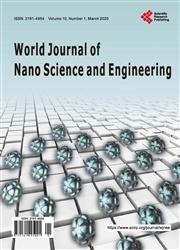Carbonaceous Nanostructured Support Materials for Low Temperature Fuel Cell Electrocatalysts—A Review
引用次数: 47
Abstract
Highly-dispersed platinum and platinum-based catalysts on a conductive support are commonly used as electrode materials in low-temperature fuel cells, particularly the hydrogen PEMFC and the direct methanol PEMFC. The performance and durability/stability of these catalysts strongly depend on the characteristics of the support. Catalysts supported on high surface area carbon black are widely used in low-temperature fuel cells. However, the corrosion of carbon black has been recognized as one of major causes of performance degradation and durability issues of low-temperature fuel cells under high-potential conditions. So the need for alternative supports with outstanding physical and mechanical properties to carry out the successful reaction in catalyst layer and give a longer lifetime for the electrocatalysts is inevitable. The emergence of nanotechnology and development of nanostructure materials in recent years has opened up new avenues of materials development for low-temperature fuel cells. This paper presents the performance with a variety of carbon-based nanostructured materials such as carbon nanotubes (CNT), carbon nanofibers (CNF), carbon aerogels, nanoplates of graphene, etc. So the present paper provides an overview of these nanostructured materials as low-temperature fuel cell catalyst supports. The improved characteristics of the nanostructured supports with respect to commercially used carbon black (Vulcan XC-72) and their effect on the electrochemical activity are highlighted. Additionally, it reviews the literature on the synthesis of nanostructured-supported Pt electrocatalysts for proton exchange membrane (PEM) fuel cell catalyst loading reducing through the improvement of catalyst utilization and activity. The features of each synthetic method were also discussed based on the morphology of the synthesized catalysts.低温燃料电池电催化剂用碳纳米结构支撑材料研究进展
在导电载体上高度分散的铂和铂基催化剂通常用作低温燃料电池的电极材料,特别是氢PEMFC和直接甲醇PEMFC。这些催化剂的性能和耐久性/稳定性在很大程度上取决于载体的特性。高比表面积炭黑负载催化剂在低温燃料电池中有着广泛的应用。然而,炭黑的腐蚀已经被认为是低温燃料电池在高电位条件下性能下降和耐久性问题的主要原因之一。因此,需要具有优异物理和机械性能的替代载体来保证催化剂层反应的顺利进行,并延长电催化剂的使用寿命是必然的。近年来,纳米技术的出现和纳米结构材料的发展,为低温燃料电池材料的开发开辟了新的途径。本文介绍了碳纳米管(CNT)、碳纳米纤维(CNF)、碳气凝胶、石墨烯纳米板等多种碳基纳米结构材料的性能。因此,本文综述了这些纳米结构材料作为低温燃料电池催化剂载体的研究进展。重点介绍了纳米结构支架相对于商用炭黑(Vulcan XC-72)的改进特性及其对电化学活性的影响。此外,综述了通过提高催化剂的利用率和活性来减少质子交换膜(PEM)燃料电池催化剂负载的纳米结构负载Pt电催化剂的合成。根据所合成催化剂的形貌,讨论了各种合成方法的特点。
本文章由计算机程序翻译,如有差异,请以英文原文为准。
求助全文
约1分钟内获得全文
求助全文

 求助内容:
求助内容: 应助结果提醒方式:
应助结果提醒方式:


